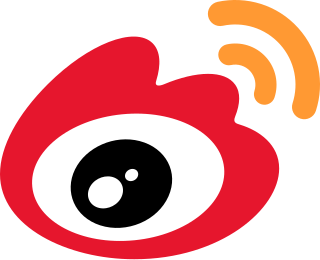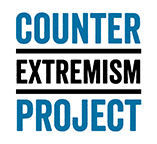
Social media are interactive digital channels that facilitate the creation and sharing of information, ideas, interests, and other forms of expression through virtual communities and networks. While challenges to the definition of social media arise due to the variety of stand-alone and built-in social media services currently available, there are some common features:
- Social media are interactive Web 2.0 Internet-based applications.
- User-generated content—such as text posts or comments, digital photos or videos, and data generated through all online interactions—is the lifeblood of social media.
- Users create service-specific profiles for the website or app that are designed and maintained by the social media organization.
- Social media helps the development of online social networks by connecting a user's profile with those of other individuals or groups.

Facebook is an American online social media and social networking service owned by Meta Platforms. Founded in 2004 by Mark Zuckerberg with fellow Harvard College students and roommates Eduardo Saverin, Andrew McCollum, Dustin Moskovitz, and Chris Hughes, its name comes from the face book directories often given to American university students. Membership was initially limited to Harvard students, gradually expanding to other North American universities and, since 2006, anyone over 13 years old. As of 2020, Facebook claimed 2.8 billion monthly active users, and ranked fourth in global internet usage. It was the most downloaded mobile app of the 2010s.

Twitter is an American microblogging and social networking service on which users post and interact with messages known as "tweets". Registered users can post, like, and retweet tweets, however, unregistered users have the ability to only read tweets that are publicly available. Users interact with Twitter through browser or mobile frontend software, or programmatically via its APIs. Prior to April 2020, services were accessible via SMS. The service is provided by Twitter, Inc., a corporation based in San Francisco, California, and has more than 25 offices around the world. Tweets were originally restricted to 140 characters, but the limit was doubled to 280 for non-CJK languages in November 2017. Audio and video tweets remain limited to 140 seconds for most accounts.
Social network advertising, also social media targeting, is a group of terms that are used to describe forms of online advertising/digital marketing that focus on social networking services. One of the major benefits of this type of advertising is that advertisers can take advantage of the users' demographic information and target their ads appropriately.
Social media marketing is the use of social media platforms and websites to promote a product or service. Although the terms e-marketing and digital marketing are still dominant in academia, social media marketing is becoming more popular for both practitioners and researchers. Most social media platforms have built-in data analytics tools, enabling companies to track the progress, success, and engagement of ad campaigns. Companies address a range of stakeholders through social media marketing, including current and potential customers, current and potential employees, journalists, bloggers, and the general public. On a strategic level, social media marketing includes the management of a marketing campaign, governance, setting the scope and the establishment of a firm's desired social media "culture" and "tone."

Sina Weibo (新浪微博) is a Chinese microblogging (weibo) website. Launched by Sina Corporation on 14 August 2009, it is one of the biggest social media platforms in China, with over 445 million monthly active users as of Q3 2018. The platform has been a huge financial success, with surging stocks, lucrative advertising sales and high revenue and total earnings per quarter. At the start of 2018, it surpassed the US$30 billion market valuation mark for the first time.

Instagram is an American photo and video sharing social networking service founded in 2010 by Kevin Systrom and Mike Krieger, and later acquired by Facebook Inc.. The app allows users to upload media that can be edited with filters and organized by hashtags and geographical tagging. Posts can be shared publicly or with preapproved followers. Users can browse other users' content by tag and location, view trending content, like photos, and follow other users to add their content to a personal feed.

Social media and television have a number of connections and interrelationships that have led to the phenomenon of Social Television, which is an emerging communication digital technology that centers around real-time interactivity involving digital media displayed on television. The main idea behind Social Television is to make television consumption a more active content experience for audiences. In the 2010s, social media platforms and websites allow for television shows to be accessed online on a range of desktop and mobile computer devices, smartphones and smart TVs that are still evolving today in the 2020's. Alongside this, online users can use social media websites to share digital video clips or excerpts from TV shows with fellow fans or even share an entire show online. Many social media websites enable users to post online comments on the programs—both negative and positive—in a variety of ways. Viewers can actively participate while watching a TV program by posting comments online, and have their interactions viewed and responded to in real time by other viewers. Technologies such as smartphones, tablets, and laptop computers allow viewers to watch downloaded digital files of TV shows or "stream" digital files of TV shows on a range of devices, both in the home and while on the go. In the 2020's, many television producers and broadcasters encourage active social media participation by viewers by posting "hashtags" on the TV screen during shows; these hashtags enable viewers to post online comments about the show, which may either be read by other social media users, or even, in some cases, displayed on the screen during the show.
Terrorism and social media refers to the use of social media platforms to radicalize and recruit violent and non-violent extremists.
Steven Stalinsky is an expert on the Middle East, terrorism and terrorist use of the Internet, and encryption technologies, and has served as Executive Director of the Middle East Media Research Institute (MEMRI) since 1999. Since 2006, his research has focused on detailing and developing strategies against cyber jihad, describing how terrorist groups such as Al-Qaeda, ISIS, and others use the Internet, social media, and encryption for propaganda, recruiting, and hacking. He was an early advocate of calling on the tech community to take stronger action on removing terrorist content from their platforms and for creating industry standards to combat it.

Telegram is a freeware, cross-platform, cloud-based instant messaging (IM) service. The service also provides end-to-end encrypted video calling, VoIP, file sharing and several other features. It was launched for iOS on 14 August 2013 and Android on 20 October 2013. The servers of Telegram are distributed worldwide with five data centers in different regions, while the operational center is based in Dubai in the United Arab Emirates. Various client apps are available for desktop and mobile platforms including official apps for Android, iOS, Windows, macOS and Linux. There are also two official Telegram web twin apps, WebK and WebZ, and numerous unofficial clients that make use of Telegram's protocol. All of Telegram's official components are open source, with the exception of the server which is closed-sourced and proprietary.
The Columbian Chemicals plant explosion was a hoax claiming an explosion at a chemical plant in Centerville, St. Mary Parish, Louisiana. On September 11, 2014, reports of an alleged explosion were sent to local residents via text messages and spread through various social media. Several reports claimed that the militant group ISIS had taken responsibility for the attack. St. Mary Parish officials claimed that the reports of an explosion were a hoax. A spokesperson for the company told reporters that the reports of an explosion were a hoax:
We have been informed by the community that a text message has been received by several individuals indicating a release of toxic gas from the Birla Carbon's Columbian Chemicals Plant near Centerville, Louisiana. The content as stated by the text message is not true. There has been no release of such toxic gas, explosion or any other incident in our facility. We are not aware of the origin of this text message. Law enforcement authorities have been contacted and are following up on this matter.

The Counter Extremism Project (CEP) is a non-profit non-governmental organization that combats extremist groups "by pressuring financial support networks, countering the narrative of extremists and their online recruitment, and advocating for strong laws, policies and regulations".

Gab is an American alt-tech microblogging and social networking service known for its far-right userbase. Gab was founded in 2016 and launched publicly in May 2017. A microblogging platform, Gab has been described as similar to Twitter. Gab also maintains an email service, a text messaging service, a news aggregate website, a news website, a video sharing platform, an advertising platform, and a web browser and browser extension to allow commenting on third-party websites.

Propaganda is a form of persuasion that is often used in media to further some sort of agenda, such as a personal, political, or business agenda, by evoking an emotional or obligable response from the audience. It includes the deliberate sharing of realities, views, and philosophies intended to alter behavior and stimulate people to act.
Ahmad Musa Jibril, also known as Abu Khaled, is a Palestinian-American Islamic radical preacher, cleric, sheikh, and imam. In 2004 he was convicted on 42 charges including fraud. Ideologically influenced by the Sahwa movement, which combines the Islamist revolutionary ideology of Sayyid Qutb mixed with Saudi Wahabbism, he promotes Salafist militant Islamism, and has extensively preached about the Syrian Civil War in highly emotive pro-Sunni terms. While not known to be affiliated directly to any particular group, it has been claimed that he has been an inspirational source for many English speaking pro-Sunni jihadist fighters in Syria, in both al-Nusra and Islamic State of Iraq and the Levant, and elsewhere.
Online youth radicalization is the action in which a young individual, or a group of people come to adopt increasingly extreme political, social, or religious ideals and aspirations that reject or undermine the status quo or undermine contemporary ideas and expressions of the nation. As for radicalization, online youth radicalization can be both violent or non-violent.

ShareChat is an Indian social media and social networking service, developed by Bangalore based Mohalla Tech Pvt Ltd. It was founded by Ankush Sachdeva, Bhanu Pratap Singh and Farid Ahsan, and incorporated on 8 January 2015. ShareChat has over 250 million monthly active users across 15 Indian languages. The company's application offers features that include private messaging, tagging and a personal messaging feature, enabling users to share videos, jokes, songs and other language based social content with other unknown users.
Comparison of user features of messaging platforms refers to a comparison of all the various user features of various electronic instant messaging platforms. This includes a wide variety of resources; it includes standalone apps, platforms within websites, computer software, and various internal functions available on specific devices, such as iMessage for iPhones.
The Katiba des Narvalos is non-partisan collective constituted from citizens from all venues of life, dedicated to fighting jihadism on social networks and more generally on the Internet. Their tactics comprise parody, as to discredit jihadist propaganda; surveying and reporting offending accounts; and infiltrating cyber-jihadist networks as to prevent terrorist attacks.











